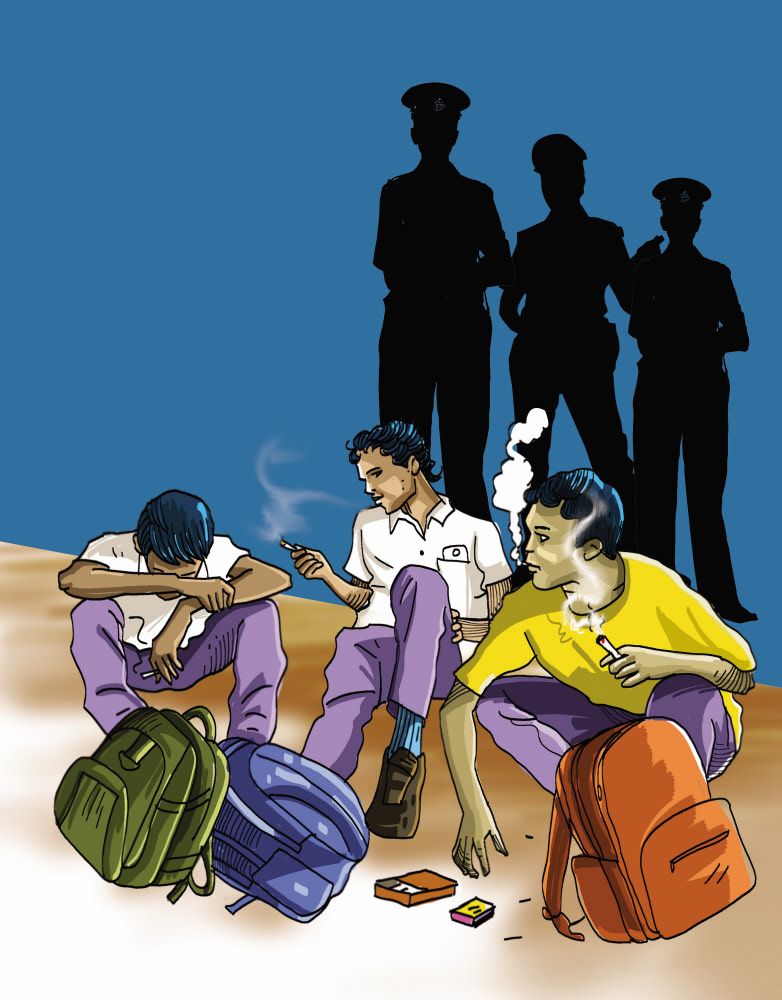Rising Wave of Substance Addiction Among Students: A Call for Action
By: Javid Amin
Srinagar 18 April 2025: An alarming trend of substance addiction is sweeping through schools, with young students increasingly falling prey to nicotine and other addictive substances. Meant to be places that nurture healthy and productive minds, schools are sadly becoming the starting point for experiments with cigarettes, vaping devices, and, eventually, stronger drugs.
This rise has prompted experts and educators to stress the urgent need for comprehensive strategies to combat addiction by reducing both the demand for and the exposure to contraband substances.
Addiction in Schools: A Troubling Reality
The journey often begins with a simple experiment—many students first encounter addictive substances within the very campuses meant to provide them with life skills for brighter futures. Cigarettes and vaping devices are often the gateway drugs, with peer pressure playing a major role.
According to a 2022 GMC Srinagar study, 23% of students admitted to smoking regularly, and an additional 6% had tried cigarettes. This highlights a worrying normalization of smoking among teenagers, exacerbated by the easy availability of tobacco products near schools, despite age restrictions and regulations.
Prof Yasir Rather, a leading de-addiction expert from the Government Medical College Srinagar, says, “It needs to start in schools. We need to equip young and impressionable minds with the tools to resist addiction in all forms, whether it be smoking, alcohol, or drugs.”
Why the Demand Must Be Reduced
Efforts by the government and law enforcement agencies to reduce the availability of drugs and contraband substances are intensifying, but experts argue that reducing demand is just as crucial. Merely restricting access won’t suffice; the key lies in targeting the root causes.
- Peer Pressure: Children often give in to substances to feel accepted or part of a group. This peer influence leads to habits that can spiral into full-blown addiction.
- Mental Health Awareness: Ignorance about mental health issues often drives students toward risky behavior as a coping mechanism.
- Lack of Skills: Many children lack the life skills to navigate negative influences, confront stress, or seek healthy outlets for emotions.
A Holistic Approach to Prevention
Experts emphasize the importance of creating robust preventive strategies, starting with schools. These strategies include:
1. Incorporating Mental Health Education
Prof Rather advocates for mental health to be prioritized alongside physical education. He suggests teaching students the importance of resilience, emotional regulation, and self-awareness. “We teach kids how to exercise and stay fit, but we rarely talk about strengthening their minds. This needs to change.”
2. Empowering Teachers as Mentors
Teachers can play a critical role in identifying early signs of distress and addiction among students.
- Training Teachers: Mental health training sessions can help educators provide initial support to students facing academic, social, or personal challenges.
- Counseling Services: Schools must integrate regular counseling sessions to help students process their emotions and prevent risky behavior.
3. Rigorous Monitoring in Schools
Random bag checks, as implemented in some schools, have proven effective in curbing the presence of banned substances. Washrooms and secluded areas—often hotspots for substance use—should also be closely monitored. Prof Rather highlights warning signs, including cigarette butts, foils, syringes, tablet blisters, and bottles, that school authorities should watch for.
The Role of Parents and Community
Substance addiction is not just a school issue—it’s a community challenge. Parents must be actively involved in fostering open conversations with children about the risks of addiction. Schools and local authorities can organize workshops to help parents recognize early warning signs and support their children effectively.
Communities must also push for stricter enforcement of tobacco and substance laws, particularly those barring the sale of tobacco products near schools. The involvement of stakeholders, including law enforcement, educators, parents, and health experts, is essential to create a protective network around students.
The Science of Early Addiction: A Dangerous Cycle
Studies have established troubling links between early exposure to nicotine and later addiction to alcohol, cocaine, methamphetamine, and opioids. Early nicotine use alters brain development in adolescents, increasing their vulnerability to other substances. “The earlier children are exposed to substances, the more difficult it becomes to break free from the cycle,” say addiction specialists.
A Call for Stringent Monitoring
The continued free availability of cigarettes and vaping devices near schools undermines the very laws meant to safeguard students. Enforcement must be strengthened through:
- Strict Penalties: Fines for shops selling tobacco products to minors.
- Spot Inspections: Regular checks near educational institutions to curb illegal sales.
- Public Awareness Campaigns: Informative sessions on the long-term risks of smoking and drug use.
Towards a Drug-Free Generation
The rising tide of substance abuse among students is not an insurmountable challenge, but it requires collective action. Stakeholders must create a multi-pronged strategy, including educational reforms, community involvement, and government oversight. By reducing demand and addressing the root causes, schools can fulfill their true purpose: nurturing healthy, productive lives.




